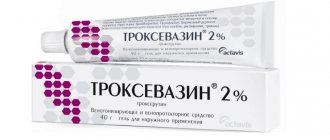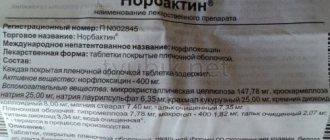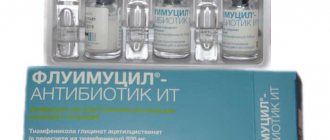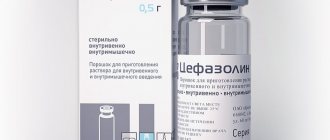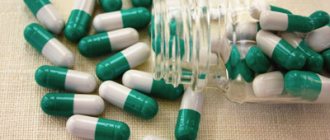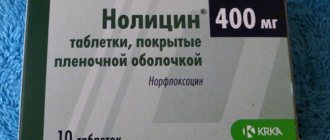Sore throat is one of the most common and unpleasant diseases. Fever, a swollen, painful throat, and general malaise cause severe discomfort to an ill person. Today there are many effective drugs on the market that help cope with the disease. One familiar to many is bioparox for angina.
Compound
The drug contains fusafungin (the concentration of the substance in one dose is 0.125 mg), as well as flavoring (additive 14868), anhydrous ethanol, saccharin, isopropyl myristate, and norflurane (propellant).
Aroma additive composition: ethanol 96%, anise alcohol; oils (anise, tarragon and wormwood); extracts of caraway fruits, clove buds, coriander seeds, field mint, peel of sweet orange fruits, bitter orange, allspice fruits, pharmaceutical rosemary flowers; vanilla resinoid, methyl anthranilate, ethyl vanillin, propylene glycol, phenylethanol, heliotropin, geraniol, lignin-based vanillin, linalol, indole, isopropyl myristate, terpineol.
Release form
Aerosol for inhalation dosed.
One cylinder contains 400 releases, one dose - 400 releases. Each release corresponds to 0.125 mg of active substance.
The drug is a characteristically smelling, transparent, oily liquid of pale yellow color. It is produced in aluminum containers with a volume of 20 ml (package No. 1). Each container is equipped with a dosing valve and has three replaceable nozzles: yellow - for nasal use, white - for inhalation through the mouth, transparent - for nasal use in children.
Pharmacodynamics and pharmacokinetics
Is fusafungin an antibiotic or not?
Wikipedia to the question “Fuzafungin - what is it?” answers that the substance is a local polypeptide antibiotic with anti-inflammatory activity . It is obtained from strain 437 of the Fusarium lateritium fungus culture.
The drug is effective against Gram (+) bacteria (group A streptococci (Str. pyogenes), Str. pneumoniae, Staphylococcus spp.); Gram (-) bacteria (including certain strains of Neisseria, Legionella pneumophila, Moraxella catarrhalis, Haemophilus influenzae); some anaerobes, fungi of the genus Candida, mycoplasmas (Mycoplasma spp.).
Pharmacodynamics
When administered by inhalation, fusafungine settles on the surface of the mucous membrane of the external respiratory system; the substance is not detected in the blood plasma. The aerosol form provides complete coverage of the mucous membrane of the respiratory tract and penetration into the bronchioles and sinuses.
After four times inhalation through each nasal passage or through the mouth, the concentration of fusafungine in the bronchi and trachea reaches 0.04, in the nasal cavity - 0.06, and in the lungs - 0.08 mg/ml.
The drug reduces exudation, relieves swelling and inflammation of the mucous membrane of the respiratory system, improves nasal breathing. Practical experience shows that the effectiveness of therapy is higher if treatment with Bioparox is started early.
Fusafungine does not reduce the effectiveness of antimicrobials for systemic use. There are no reports of cross-resistance or acquired resistance.
Pharmacokinetics
After use in the form of inhalation, the drug is distributed mainly on the surface of the mucous membrane in the nose, oral cavity and pharynx. The concentration of the substance in the blood plasma does not exceed 1 ng/ml and does not affect the safety of Bioparox.
Main active ingredient
The main active ingredient of this drug is the polypeptide antibiotic fusafungin, which has a good anti-inflammatory and bacteriostatic effect. This substance was isolated from a mold that affects cereals. At one time, in the 60s of the last century, the discovery of fusafungine was considered practically a revolution in medicine. The mechanism of action of this medicine is based on the suspension of the vital activity of microorganisms sensitive to it. It is not yet clear why Bioparox was banned in Russia. Let's figure it out further.
Indications for use
Bioparox spray is used for local treatment of inflammatory and infectious diseases of the external respiratory system . It is prescribed for tracheitis and laryngitis , pharyngitis and nasopharyngitis , bronchitis and tonsillitis , rhinitis , sinusitis and sinusitis , as well as for conditions after surgery to remove the tonsils ( tonsils ).
The feasibility of using Bioparox for angina
For angina , Bioparox is not always used. throat (or acute tonsillitis ) is an infectious disease with local manifestations of inflammation in the area of the 1st and 2nd tonsils.
Reviews about Bioparosk for sore throat are good. However, the drug can only be used at the catarrhal stage of inflammation - with redness and swelling of the palatine tonsils , that is, when the inflammatory process has just begun.
In addition, Bioparox is widely used to treat exacerbations of chronic tonsillitis , which in most cases are not as severe as tonsillitis .
If acute tonsillitis is complicated by the appearance of pustules, the use topical antibiotics If there is no improvement after three days of treatment or the patient’s condition worsens, the drug is discontinued and the patient is prescribed systemic antibiotics .
Using Bioparox spray for sinusitis
For sinusitis, the spray is effective only in the initial stages of the disease. Sinusitis is an acute or chronic inflammation of the paranasal sinuses. Acute sinusitis usually develops against the background of acute respiratory viral infection , complicated by a bacterial infection .
The first symptoms of the disease are persistent long-term nasal congestion, headache and high fever. Acute sinusitis , like acute tonsillitis , cannot be cured with Bioparox alone. The effect of using the drug is possible only in the very early stages of inflammation.
systemic antibiotics will most likely be required .
Important rules of use
- The medicine cannot be used after the expiration date;
- It should be stored in a place where children cannot reach it;
- You can use Bioparox when driving vehicles. The medicine does not affect the speed of reactions (mental and physical);
- Do not spray the drug into the eyes;
- Do not expose to high temperatures (over 50º);
- The use of Bioparox during purulent tonsillitis is ineffective;
- Sore throat can be treated only in the initial, unadvanced stage.
Bioparox has no analogues. Its action can only be replaced by antibacterial drugs.
Side effects
Sometimes (very rarely) side effects may occur, such as increased dryness in the nose/throat, dysgeusia , sneezing, throat irritation, nausea, and cough.
These reactions are transient and do not require cessation of treatment.
Sometimes, especially in patients prone to allergies , local reactions from the skin and subcutaneous tissue, mucosal reactions (redness, swelling), bronchospasm , and superinfection . In such cases, treatment with Bioparox should be discontinued.
If symptoms appear from the external respiratory system, skin or larynx, due to the risk of developing anaphylactic shock, it may be necessary to urgently administer epinephrine ( Adrenaline ) at a dose of 0.01 mg/kg. Method of administration: intramuscular injection. In some situations, repeated administration of epinephrine . The drug is administered in the same dose after about 20 minutes.
Features and principle of action of the drug
Stops the growth of pathogens that are sensitive to the active substance Bioparox.
Detrimental effect on streptococci, staphylococci, anaerobic bacteria, Candida fungi and mycoplasma.
For all possible pathogens of sore throat, which do not get used to the drug and remain sensitive throughout the treatment.
The antifungal and antibacterial properties of Bioparox are complemented by an anti-inflammatory effect, which significantly reduces the formation of tonsil tissue necrosis.
When sprayed, the active substance enters directly onto the mucous membrane and is not absorbed into the blood.
Spray Bioparox: instructions for use
Instructions for use of Bioparox in adults
The standard dose of the drug for infectious and inflammatory diseases of the respiratory system ( bronchitis , pharyngitis , tracheitis , etc.) for adult patients (including adolescents and the elderly) is four injections through the mouth and/or two injections into each nasal passage 4 r ./day
Spray Bioparox: instructions for use for children
Due to the risk of developing laryngospasm, can only be used from 2.5 years.
A single dose of Bioparox for children from 2.5 to 11 years old - one injection into each nasal passage or two injections into the mouth. Frequency of applications - 4 rubles/day.
Many mothers leave good reviews about Bioparox spray. In their opinion, the drug very quickly helps with pharyngitis and sore throat , but can cause adverse reactions in the form of a burning sensation in the throat and allergic stomatitis .
Some are afraid to use Bioparox for children, remembering the inappropriateness of topical use of antibiotics .
Dr. Komarovsky gives an explanation on this matter in his blog: it is forbidden to instill antibiotics , which are intended for systemic use, but fusafungin is not systemic, therefore, it can definitely be used topically, and doctors who prescribe a spray for children in no way violate pharmacological principles and norms of modern medicine.
Bioparox or Hexoral - which is better?
Hexoral is a drug similar in effect to Bioparox. The main component is hexetidine, which has a bacteriostatic effect. The mechanism is to suppress the oxidative reactions of metabolic processes of microorganisms.
The drug inhibits the growth and development of gram-positive microorganisms, fungi of the genus Candida, Proteus spp., influenza viruses strain A, RS virus, HSV type 1. The advantage of the drug is that pathogens do not develop resistance to the effects of hexethidine.
Experts prescribe Hexoral in the complex treatment of oral candidiasis, inflammatory diseases of the oral cavity and gums. Bioparox, unlike its analogue, was used as an independent drug.
Hexoral is contraindicated in case of hypersensitivity to hexethidine, children under 3 years of age, pregnant and lactating women.
special instructions
Due to the possibility of relapse, it is not recommended to stop using Bioparox immediately after the first signs of improvement appear.
Long-term use of the drug can cause an imbalance in microflora and the spread of superinfection.
Lack of improvement after a week of treatment is a reason to consider alternative therapy.
The fragrance contains propylene glycol , which may cause skin irritation.
The spray contains a small amount of ethanol (less than 0.1 g/dose).
Features of using an aerosol can
Before using Bioparox for the first time, to fill the dosing mechanism, press the main nozzle 4 times. After this, the nozzle on the container is replaced with the desired one: white - for the mouth, yellow - for the nose, transparent - children's for the nose.
Before using the spray, you need to clean your nasal passages. Holding the container in a vertical position, insert the nozzle into each nasal passage one by one and make the required number of injections. In this case, the mouth and other nasal passage should be closed.
In case of use through the mouth, a white nozzle is inserted into the mouth, lips are compressed around it and, lightly pressing on the bottom of the can, an injection is made (you need to breathe as usual during injection).
The container must be disinfected daily. The treatment is carried out once a day, using cotton wool soaked in a solution of ethyl alcohol (90%).
Process of using the drug
The drug can be used through the nose or mouth.
Before use, it is necessary to rinse the nozzle of the drug thoroughly under hot water or treat it with any antiseptic agent.
The Bioparox instructions describe the following sequence:
- Rinse your throat well with an antiseptic (this maximizes the effect of the drug);
- Place the drug vertically;
- Introduce the medicine into the mouth as close to the tonsils as possible;
- Take a deep breath and spray Bioparox, pressing on the top of the can;
- Exhale;
- Repeat as many times as necessary;
- Remove the drug from your mouth.
After completing the procedure, be sure to wash the nozzle of the can.
The process itself should be aimed at thoroughly irrigating the entire diseased cavity.
Analogues of Bioparox
Level 4 ATC code matches:
Grammidin with anesthetic Neo
Grammidin for children
Grammidin with anesthetic
Grammidin Neo
Grammidin
Gramicidin S
Trachisan
Drugs with a similar mechanism of action: Gramicidin S , Grammidin , Gramicidin paste , Isofra .
Price of Bioparox analogues
Almost all analogues are cheaper than Bioparox. Grimicidin tablets (No. 20) cost an average of 135-140 rubles, Isofra - from 240 rubles, Grammidin - from 165 rubles.
Drug interactions
There is currently no data on the compatibility of Bioparox with other medications. Quite often the drug is prescribed in combination with other antibiotics.
Analogs
In terms of the active component, there are no similar drugs to Bioparox, but it is quite often replaced with products with a similar effect. These medications include:
- "Isofra";
- "Hexoral";
- "Tantum Verde".
The instructions for these drugs will allow you to find out their composition, indications for use, mechanism of action, dosage and contraindications for use.
Bioparox during pregnancy and breastfeeding
Is it possible to use Bioparox during pregnancy?
The spray contains the antibiotic fusafungin , which is not detectable in blood plasma when administered inhaled.
The manufacturer, in the annotation for the drug, when asked whether pregnant women can take inhalations with Bioparox, answers that during pregnancy the drug can be used, but only with the approval of the attending physician and if there are indications.
Animal studies did not reveal any negative effects (direct or indirect) on the course of pregnancy/childbirth, as well as on the development of the child in the prenatal period and during infancy. The use of the drug did not reduce fertility in female and male rats.
Please remember that taking any medications during pregnancy carries certain risks. As for the spray, there are no clinical data that would confirm the safety of its use in pregnant women.
Why is Biparox prescribed during pregnancy?
Due to the extremely low absorption of fusafungin, the likelihood that the drug will cause fetal developmental disorders is extremely low, even if Bioparox is used in early pregnancy.
In this case, the spray can cause much less harm than an infection, since the most common acute respiratory viral infection suffered by the mother in the first weeks of pregnancy often leads to a miscarriage or the development of defects incompatible with life.
However, if it is necessary to use it in the 1st trimester (especially in the first 8-9 weeks), after completion of treatment it is recommended to check how correctly the fetus is developing.
In the 2nd trimester, colds are not so scary for a child. By this time, the child has already formed all the vital organs, so viruses no longer have a fatal effect. However, a cold that is not treated in time can cause fetal hypoxia and damage to the nervous system.
Oxygen starvation can lead to both a slight slowdown in development and cerebral palsy or dangerous underdevelopment of the brain.
In the 3rd trimester, a cold can trigger premature labor. Timely use of Bioparox allows you to minimize this risk and also prevents the risk of hypoxia .
Reviews of Bioparox during pregnancy are good: the drug very quickly eliminates inflammation, makes breathing easier and relieves sore throat. Mothers who used it at different stages of pregnancy note that the treatment did not affect the health of their children in any way - their babies were born strong and healthy. However, despite all the safety of fusafungin , it is still not worth using it uncontrolled.
Use during lactation
When feeding, the use of Bioparox is possible if indicated.
It is unknown whether the active substance of the drug penetrates milk during breastfeeding. The decision to stop or continue breastfeeding/therapy is made taking into account the benefits of the first for the child and the second for the mother.
The ability of fusafungine to pass into breast milk has not been studied in animal studies.
Contraindications
It is contraindicated to take Bioparox if:
- hypersensitivity to the components of the drug;
- early age (children under 2 years of age are prohibited from using antibiotics);
- caution for people prone to allergic reactions to medications.
Exceeding the prescribed dose of the drug interferes with blood flow, and the mouth and nasopharynx may become numb. There is also loss of coordination of movement, pain and burning in the larynx.
If one or a group of the above symptoms appear during an overdose, you should immediately call an ambulance. Before she arrives, lie down on your side.
During pregnancy
"Bioparox" is an antibiotic. That is why its use during pregnancy should be limited.
Doctors prefer not to prescribe the spray to pregnant women, since no reliable studies have yet been conducted on the effect of the drug on the embryo in the womb, or even on the expectant mother herself. Experiments on animals showed no negative effect on the fetus.
For the same reasons, it is not recommended to use the aerosol for women who are breastfeeding.
Reviews about Bioparox
Many people evaluate Bioparox as a fast-acting and very effective remedy for infectious and inflammatory diseases of the respiratory system . The active substance of the drug acts only on the surface of the mucous membrane of the ENT organs and respiratory tract, which allows the spray to be used during pregnancy and in pediatric practice.
The drug is effective against bacterial pharyngitis , bronchitis and rhinitis . However, only if used correctly: for sore throat and sinusitis , Bioparox can only help if it is started to be used immediately after the first symptoms of the disease appear.
Reviews about Bioparox for children are quite contradictory. Some mothers praise the medicine for the fact that it quickly copes with cough, runny nose, redness and sore throat. Others call it completely useless.
The disadvantages of the spray, in their opinion, are also its specific taste and pungent smell, which children often do not like, the presence of side effects (burning and dry throat), and high price.
Based on patient reviews, we can draw the following conclusion that the drug can act completely differently on different people, so it should be used only with the approval of the attending physician and taking into account the patient’s response to the prescribed treatment.
Side effects and analogues
- In general, side effects are rare. Locally in the area of inhalation, irritation and dryness of the mucous membrane, and an unpleasant taste may occur after using the drug. Sometimes there is swelling in the eye area, coughing, and sneezing. Do not forget about possible allergic reactions (rash, itching, urticaria, Quincke's edema) to the components of Bioparox.
- There are no analogues of this drug. There are no other products that contain fusafungin. However, in some cases (for local treatment of nasopharynx and sinusitis), you can use Isofra spray. It is only a replacement of one antibiotic for another, but not an analogue.
